A dramatic game at Camp Nou against Inter, which ended in a 3-3 draw, gave Barcelona some last hope that they can remain in the UEFA Champions League competition. After losing 0-1 in their last meeting, Xavi’s team had a lot to prove if they wanted to have a chance to play European football either in CL or the Europa League.
The Spanish side demonstrated their desire to win by putting on a dynamic display and scoring three goals. However, Inter took advantage of their defensive lapses and didn’t give up until the end despite the pressure.
Robert Lewandowski was the key figure for Barcelona, equalising twice and awarding them with an important point. Hakan Çalhanoğlu, on the other side, was the player that had the most significant impact for the Nerazzurri both in and out of possession and helped them to cope with Barca’s constant pressure.
Simone Inzaghi’s team need a convincing win against Viktoria Plzeň if they want to keep their chances of reaching the knockout stage in tact, with Barcelona having the more difficult task to win points against Bayern Munich in their next game.
This tactical analysis examines both teams’ performance and how the draw unfolded tactically.
Lineups and formations
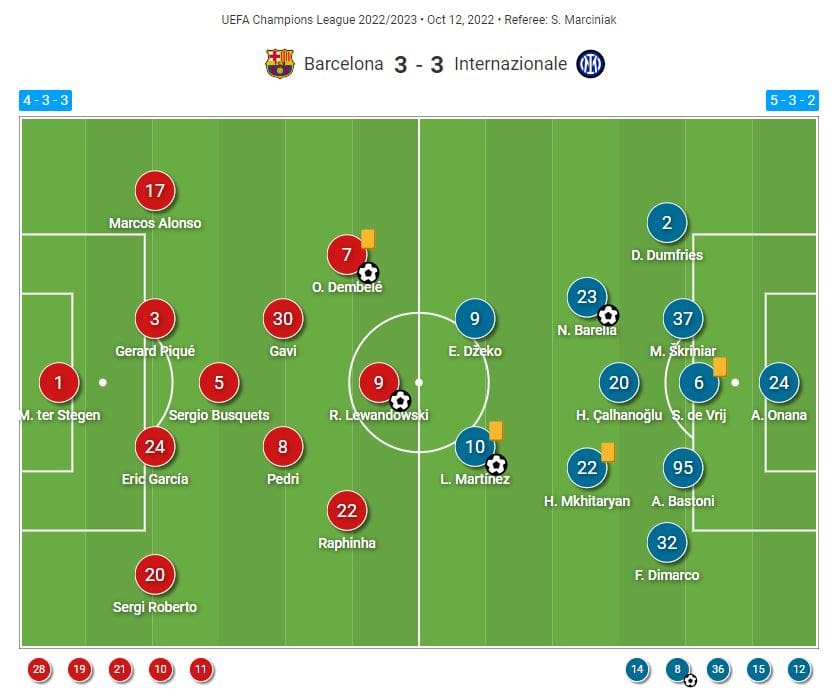
Barcelona started the game in their usual 4-3-3 under Xavi. The team are currently struggling with some injuries, which gave other the chance to help their team. The goal was covered by Marc-André ter Stegen. The four-man defensive line in front of him consisted of Marcos Alonso, Gerard Piqué, Eric García and Sergi Roberto, although they practically played with a back-three in possession, with Sergi Roberto moving into a more advanced position.
They tried to dominate the game and their possession resulted in the backline being highly positioned throughout the game and the team controlling the game in the opposition half.
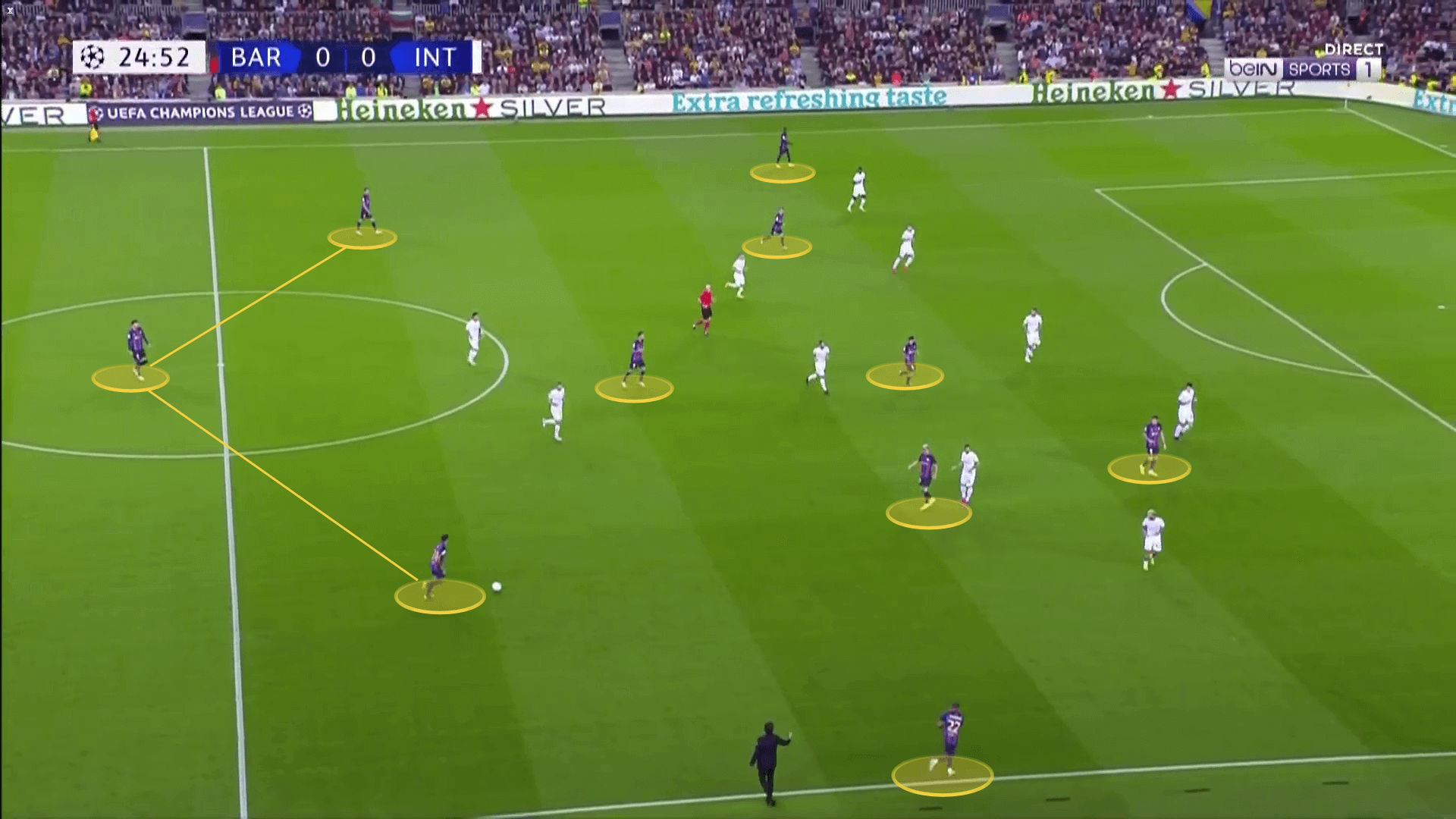
Gavi, Sergio Busquets and Pedri dominated in midfield, with Pedri being crucial both with and without the ball. He was constantly winning back possession and supporting the team through distinguished passing in attack as well.
The attack consisted of Ousmane Dembélé, Robert Lewandowski and Raphinha. Lewandowski bombarded Inter’s goal nine times in the game and was the main reason for the team achieving a draw.
André Onana played on the goal for Inter in their usual 3-5-2, finishing the game with seven saves and saving the team from conceding even more goals. Alessandro Bastoni, Stefan de Vrij and Milan Škriniar played in defence and had struggles to bypass the press and build-up from the back, which resulted in inaccurate passing and losing the ball frequently. They weren’t convincing defensively as well, as they failed in their marking efforts on multiple occasions.
Federico Dimarco and Denzel Dumfries played in the wing-back roles, with them contributing successfully in attack but struggling to fulfil their defensive responsibilities. The midfield consisted of Henrikh Mkhitaryan, Hakan Çalhanoğlu and Nicolò Barella who had the tough task to break through Barca’s press and create opportunities for their team.
Edin Džeko and Lautaro Martínez were responsible for threatening the goal.
Barcelona’s intensity in and out of possession
Barcelona’s press intensity was crucial for their successful performance in the game, however, it was also often the reason for the opposition to create opportunities. Xavi’s side were constantly on the front foot and tried to dominate the game in the opposition half, by being positioned highly and focusing on their pressing efforts.
The Blaugrana were overcommitted to recovering possession in the advanced areas and the midfield, which is the reason for their average 4.61 PPDA rate in the game. Their efforts to win the ball back at all costs often forced Inter’s players into individual mistakes. The Nerazzurri couldn’t resist the pressure and would lose the ball far too frequently, giving the opposition the opportunity to shoot.
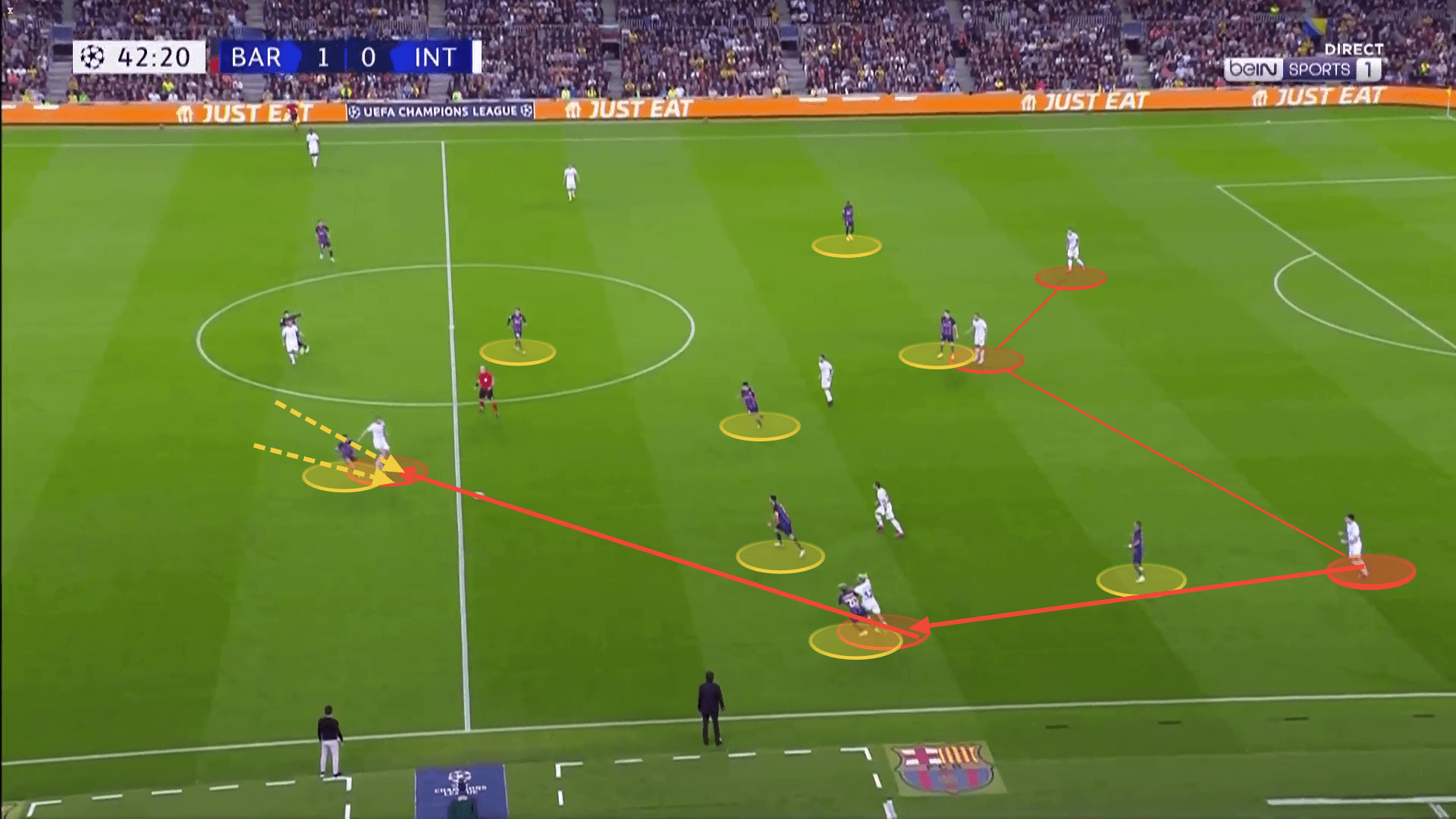
Inter finished the game with 124 losses, 12 of which resulted in a shot for Barcelona. The players struggled in their marking strategy as a result of Barca’s overload in their half. Both wing-backs were forced to drop deeper too often, which affected the team’s performance in possession as well.
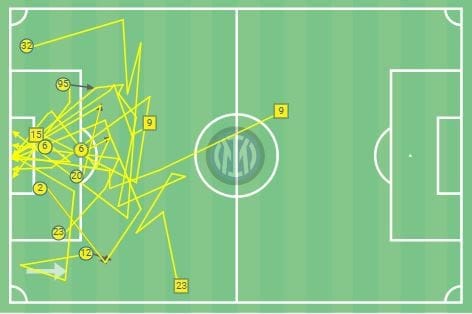
Barcelona’s efforts to recover possession in the advanced areas affected Inter’s build-up from the back. The pressure they were put under often resulted in inaccurate passing, making it very difficult for the team to get out of their own half and threaten the goal. Inzaghi’s side only managed to create 12 positional attacks, with only four of them resulting in shots. This underlines Barcelona’s discipline off the ball and their success in troubling the opposition’s ball progression.
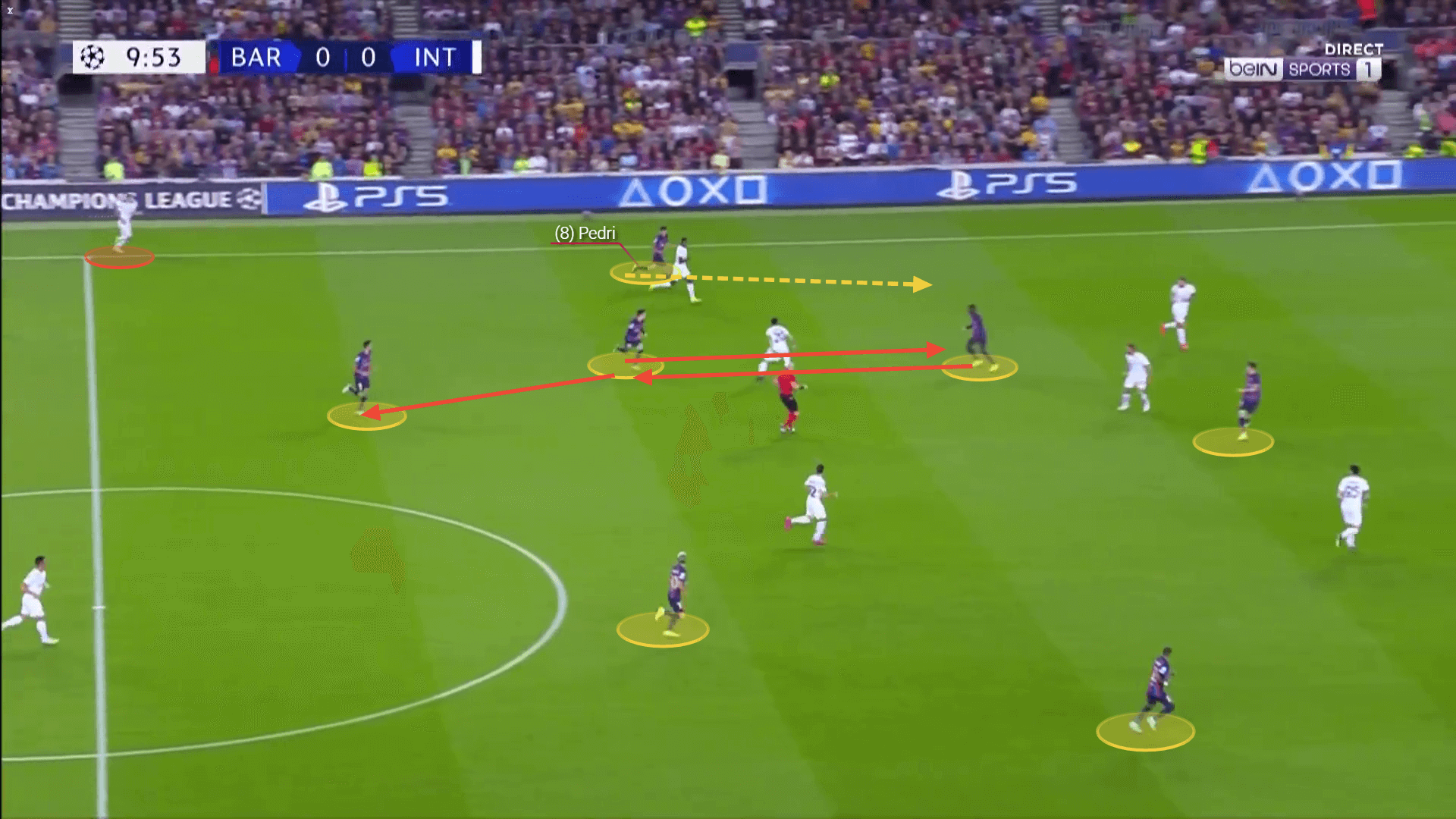
The Spanish side were very active in possession as well. The intensity and frequency of their passing and movement often dispositioned the opposing players and allowed them to exploit quality areas. The commitment of more players in the opposition half allowed them to create more passing combinations and progress the ball successfully.
With the freedom of movement of the three attacking players and the distinguished passing and support from midfield, Barcelona managed to produce 25 shots throughout the game. They heavily relied on crossing the ball as they tried to exploit the spaces behind Dumfries and Dimarco. Pedri and Raphinha’s dribbling skills helped a lot in breaking through the defence and allowed the team to create quality opportunities.
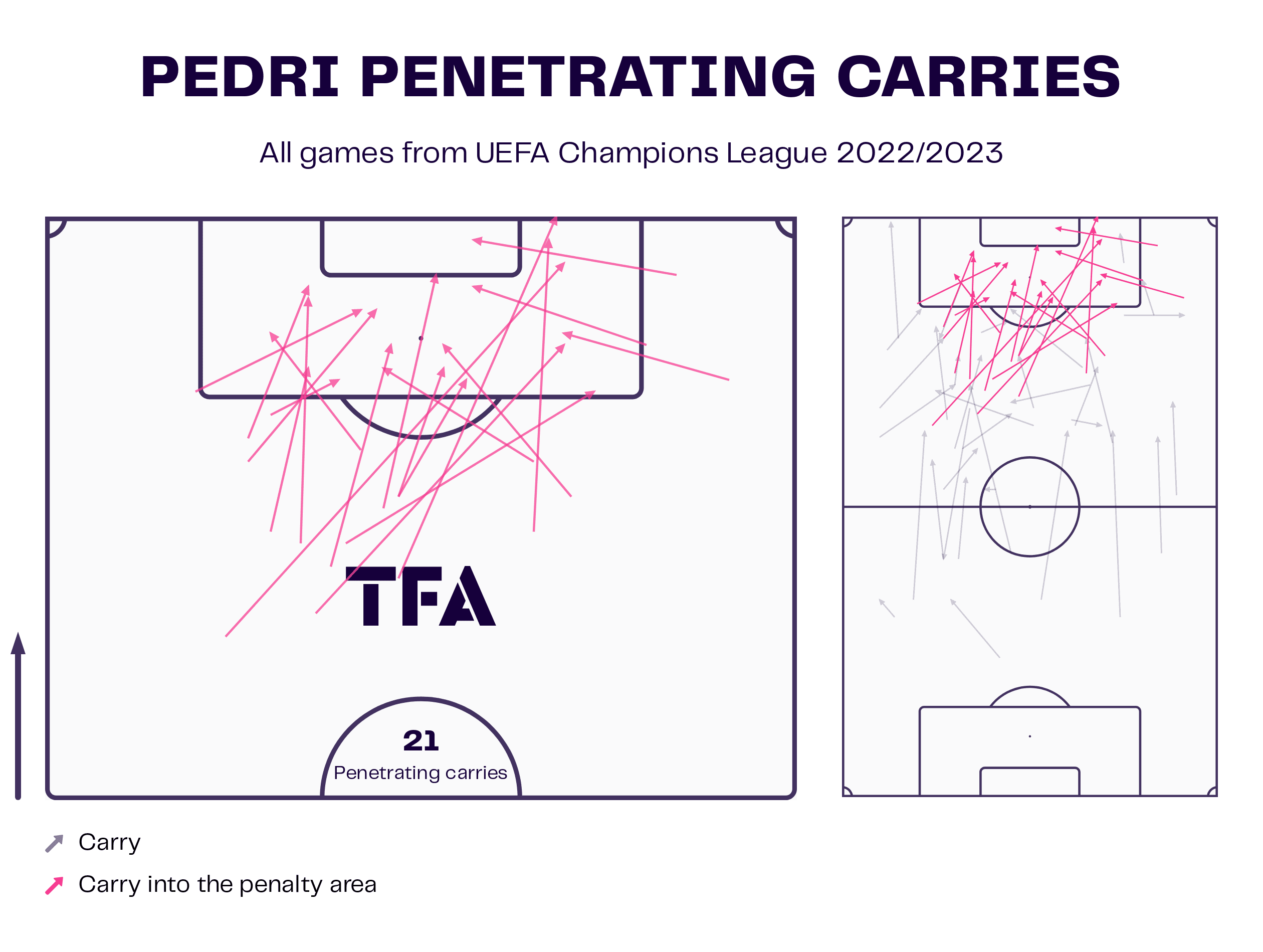
Barca’s lack of defensive maturity against Inter’s experience
Barcelona’s advanced positioning came at the expense of some defensive lapses though. While they seemed well prepared for the game and blocked Inter’s build-up from the back, they couldn’t deal with the opposition’s counterattacking efforts successfully.
The Italians are a team who try to use the players to their potential and have developed a successful counter-attacking strategy. Despite being pinned back and forced into both individual and collective errors, they still tried to find a way out of the situation. When using long balls to bypass the press didn’t work quite well, they focused on their counter-attacking movement.
Barcelona’s highly positioned defence gave them the perfect opportunity to expose them once they recover possession. The Nerazzurri managed to expose the opposition on the counter seven times with a combination of strong off-the-ball movement and quality long balls. The keeper Onana was also heavily involved in these actions as he would often recover the ball after another dangerous Barcelona attack and immediately play a long ball behind the defence, which would catch them off-guard.
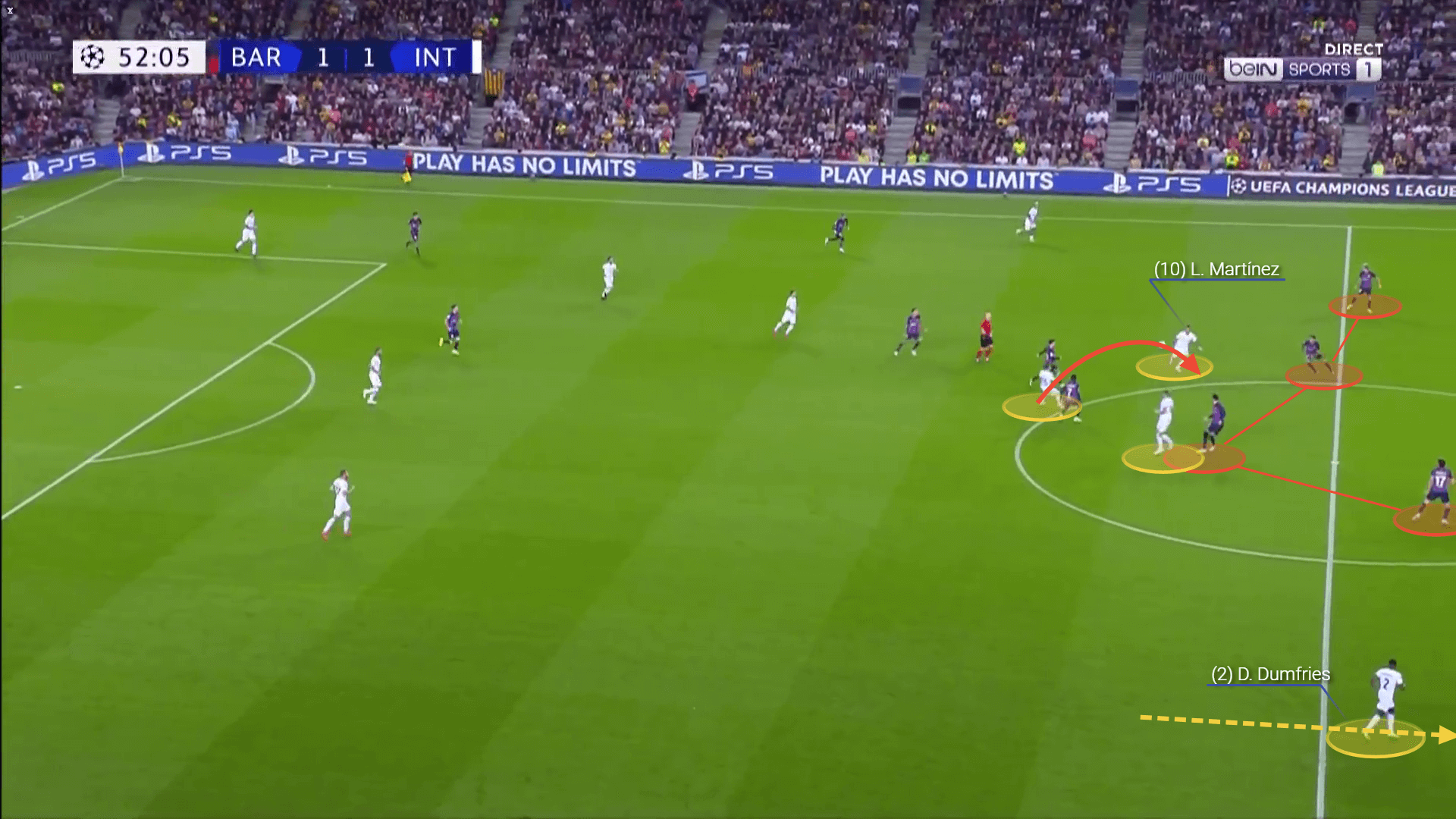
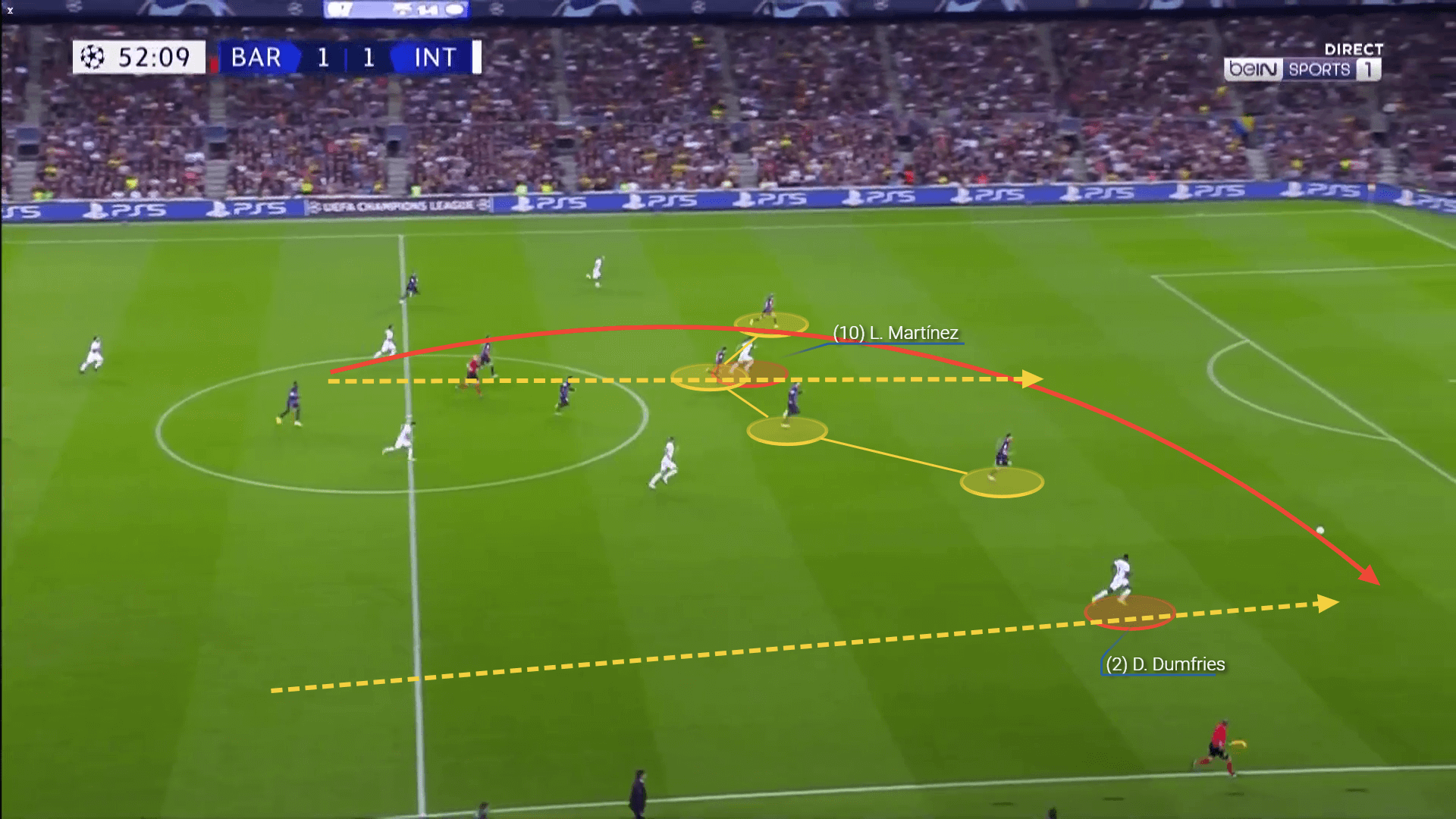
Inter’s experience allowed them to change their tactics in-game and switch to direct play once they saw Barcelona’s resistance off the ball. Their aim to advance the ball as quickly as possible, with fewer passes helped them in exposing the gaps behind Barca’s highly positioned defence.
Conclusion
As our analysis shows, while Barcelona still have some issues, Xavi’s tactics are starting to show and the team look more and more confident and threatening under him. The team have developed a successful strategy in possession that manages to disposition even the most experienced defences.
Inter, on the other side, have been struggling in the league, failing to show character against the top teams but their displays in the CL show that they still have the quality to trouble the opposition.





Comments